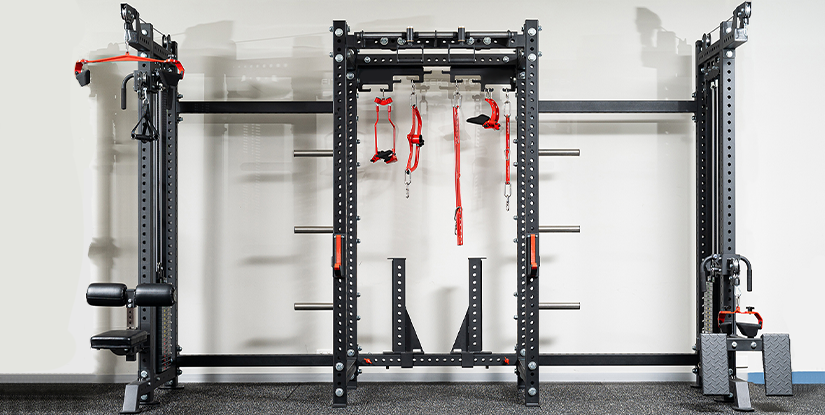Lat Pull Cable Guide: Technique, Variations & Programming

Lat Pull Cable: Efficient Back Development
The lat pull cable is a versatile component of the cable pulley system designed to target the latissimus dorsi and surrounding musculature. When programmed and executed correctly, lat pulldowns and cable-based variations provide consistent resistance throughout the range of motion, improved muscle activation, and joint-friendly loading compared with free-weight alternatives.
Anatomy and Primary Targets
The primary target of the lat pull cable is the latissimus dorsi, a broad muscle responsible for shoulder adduction, extension, and internal rotation. Secondary muscles involved include the teres major, posterior deltoid, rhomboids, and biceps brachii. Understanding these contributions helps refine grip, angle, and tempo to emphasize specific regions of the back.
Common Lat Pull Cable Variations
- Wide-grip lat pulldown: Emphasizes outer lats and a broader V-taper; performed with a long bar and a high pulley.
- Close-grip (V-handle) pulldown: Increases mid-back and lower-lat recruitment with a stronger elbow flexion component.
- Reverse-grip pulldown: Shifts emphasis to lower lats and biceps; useful for improving spinal alignment during pulls.
- Single-arm cable lat pulldown: Corrects side-to-side imbalances and allows greater range of motion at the bottom of the pull.
- Kneeling or standing high-to-low cable row: A variant that simulates lat pulldown mechanics with a different line of pull.
Setup and Technical Cues
Proper setup maximizes effectiveness and reduces injury risk. Select an appropriate attachment and adjust the thigh pads or seating position to restrict lower-body drive. Key technique cues: sit tall with a neutral spine, retract scapula before initiating movement, lead with the elbows rather than the hands, pull to the upper chest for wide grips or to the sternum for close grips, and control the eccentric return for tension throughout the set.
Programming Considerations
Integrate lat pull cable work according to goals: 6–8 reps for strength with heavier loads, 8–12 reps for hypertrophy, and 12–20 reps for endurance or prehab emphasis. Rest periods of 1–3 minutes between heavy sets and 30–90 seconds for hypertrophy protocols are common. Combine with compound horizontal rows and deadlift variants to create a balanced back training block.
Common Mistakes and Corrections
- Using excessive momentum: Reduce load and focus on scapular control to avoid cheating with torso swing.
- Pulling with the arms instead of the back: Emphasize elbow drive and scapular retraction to involve the lats more directly.
- Failure to control the eccentric phase: Maintain tension by lowering the weight under control to promote hypertrophy and tendon resilience.
- Improper seat or pad adjustment: Ensure stabilization to prevent excessive hip drive and loss of range of motion.
Equipment Selection and Attachments
Select cable machines that provide smooth, low-friction pulleys and adjustable heights. Common attachments include straight bars, lat bars with wide grip options, V-handles, rope attachments, and single-hand D-handles. Each attachment subtly changes wrist position and line of pull—adjust according to mobility and desired muscle emphasis.
Safety and Maintenance
Inspect cables, attachments, and pulleys regularly for fraying, stiffness, or abnormal noise. Replace worn components immediately. Warm up with dynamic shoulder and scapular mobility drills before heavy lat pull sessions. If experiencing shoulder pain, regress to lighter loads, change grip angles, or consult a medical professional to rule out impingement or tendon pathology.
Progression Strategies
Progress using load, volume, time under tension, and variation. Implement progressive overload by increasing resistance in small increments, adding sets or reps, slowing tempo for eccentric emphasis, and rotating attachments to stimulate different muscle fibers without overstressing connective tissue.
Sample Lat Pull Cable Workout
- Warm-up: 5–10 minutes cardio and banded scapular retractions, 2 sets of 15 light pulldowns.
- Main: Wide-grip lat pulldown 4x8–10, Close-grip V-handle pulldown 3x10–12, Single-arm cable lat pulldown 3x10 each side.
- Finisher: Straight-arm cable pulldown 3x12–15 for lower-lat isolation and thoracic engagement.
Troubleshooting
If you experience limited range of motion, assess thoracic extension and scapular mobility. If the biceps dominate the movement, reduce load and perform scapular retraction drills before sets. For machine-related inconsistencies, test other stations or adjust pulley height to maintain a consistent line of pull.
Conclusion
The lat pull cable is a cornerstone of targeted back development. Its adaptability for grip, angle, and tempo makes it suitable for beginners and advanced lifters alike. Prioritize technique, maintain equipment, and integrate variation and progressive overload to achieve reliable strength and hypertrophy gains while minimizing injury risk.
FAQs
- What muscles do lat pulldowns target Most notably the latissimus dorsi, plus teres major, rhomboids, and biceps.
- Wide grip or close grip Which emphasizes outer lats (wide) versus mid-back and lower-lat involvement (close).
- How often should I train lat pulldowns 2–3 times weekly depending on volume and recovery.
- Should I use momentum No; minimize torso swing to keep tension on the lats.
- Reverse grip benefits It increases lower-lat activation and involves the biceps more.
- Single-arm vs both Useful for correcting imbalances and increasing range of motion unilaterally.
- Best rep range for growth 8–12 reps per set is optimal for hypertrophy in most trainees.
- Can lat pulldowns replace pull-ups They are an effective alternative and progression toward pull-ups.
- When to reduce weight If form breaks down, elbows lead poorly, or you rely on momentum, lower the load.

